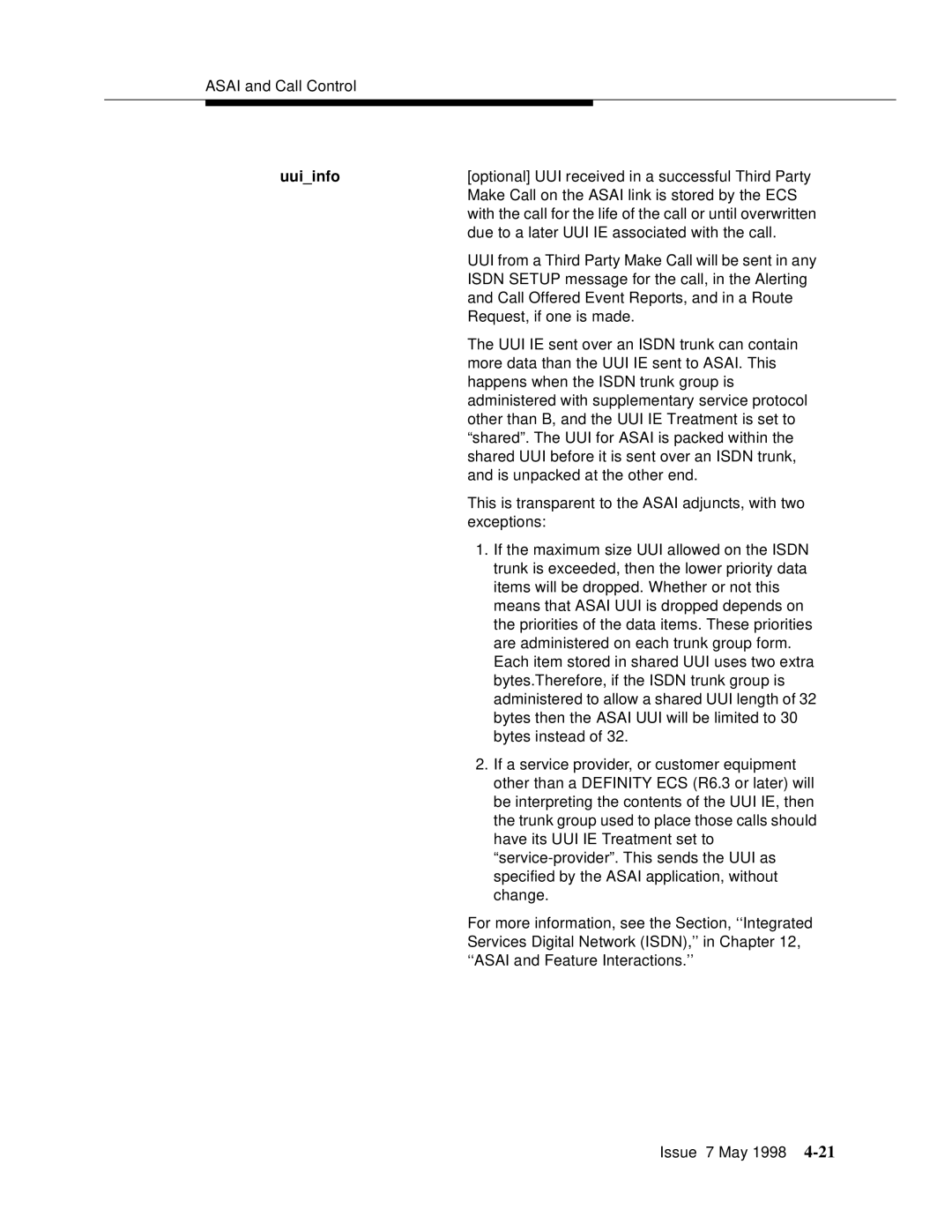ASAI and Call Control
uui_info | [optional] UUI received in a successful Third Party |
| Make Call on the ASAI link is stored by the ECS |
| with the call for the life of the call or until overwritten |
| due to a later UUI IE associated with the call. |
| UUI from a Third Party Make Call will be sent in any |
| ISDN SETUP message for the call, in the Alerting |
| and Call Offered Event Reports, and in a Route |
| Request, if one is made. |
| The UUI IE sent over an ISDN trunk can contain |
| more data than the UUI IE sent to ASAI. This |
| happens when the ISDN trunk group is |
| administered with supplementary service protocol |
| other than B, and the UUI IE Treatment is set to |
| “shared”. The UUI for ASAI is packed within the |
| shared UUI before it is sent over an ISDN trunk, |
| and is unpacked at the other end. |
| This is transparent to the ASAI adjuncts, with two |
| exceptions: |
| 1. If the maximum size UUI allowed on the ISDN |
| trunk is exceeded, then the lower priority data |
| items will be dropped. Whether or not this |
| means that ASAI UUI is dropped depends on |
| the priorities of the data items. These priorities |
| are administered on each trunk group form. |
| Each item stored in shared UUI uses two extra |
| bytes.Therefore, if the ISDN trunk group is |
| administered to allow a shared UUI length of 32 |
| bytes then the ASAI UUI will be limited to 30 |
| bytes instead of 32. |
| 2. If a service provider, or customer equipment |
| other than a DEFINITY ECS (R6.3 or later) will |
| be interpreting the contents of the UUI IE, then |
| the trunk group used to place those calls should |
| have its UUI IE Treatment set to |
| |
| specified by the ASAI application, without |
| change. |
| For more information, see the Section, ‘‘Integrated |
| Services Digital Network (ISDN),’’ in Chapter 12, |
| ‘‘ASAI and Feature Interactions.’’ |
